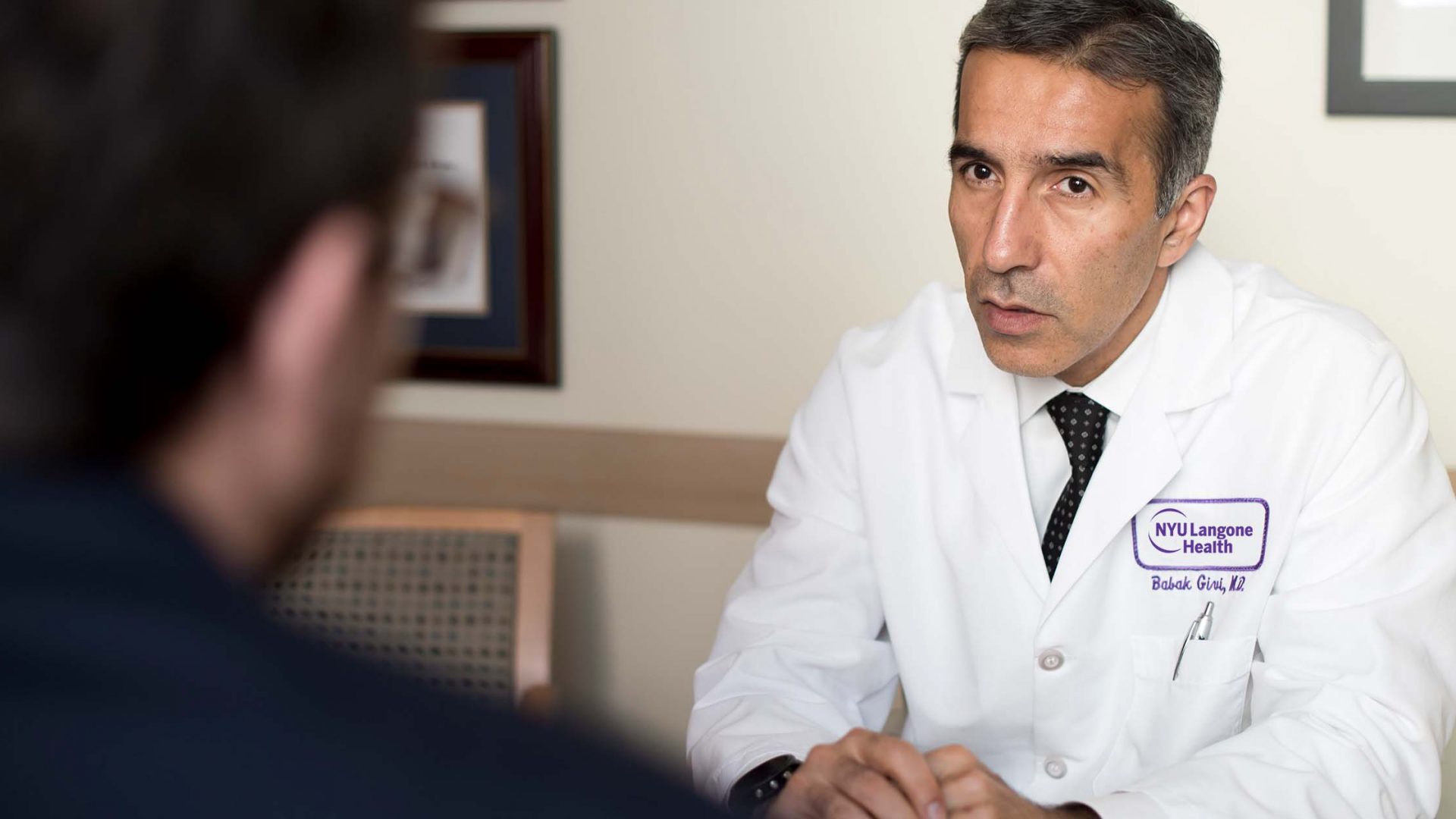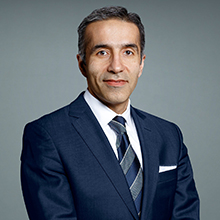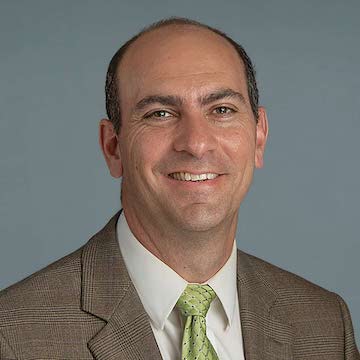Sentinel node biopsy offers a less invasive alternative to cervical lymphadenectomy, or neck dissection, in oral cavity cancers. More traditional resection of tongue and other oral cavity tumors, which involves removing all surrounding lymph nodes, is often unnecessary in early stage disease and can carry complications such as nerve injury, fibrosis, and scarring.
“We’ve known that as many as 70 to 80 percent of patients don’t need to have their lymph nodes removed, but because those other 20 to 30 percent of patients have very poor outcomes, it’s done out of an abundance of caution,” explains Babak Givi, MD, a surgical oncologist specializing in head and neck cancers.
Dr. Givi is the trial site principal investigator at NYU Langone Health for a multi-institutional randomized controlled trial examining the long-term cure rate of sentinel node biopsy compared to neck dissection.
“We don’t need to take out 20 or 30 lymph nodes if removing the one or two at highest risk delivers the same information.”
Babak Givi, MD
“My hope is that as we follow these patients, safety and effectiveness data will be convincing, so the minimal approach can be routinely adopted,” explains Dr. Givi. “We don’t need to take out 20 or 30 lymph nodes if removing the one or two at highest risk delivers the same information.”
Advanced Imaging Key to Targeting Treatment
Patients with early-stage tumors are first evaluated by PET scan to ensure there is no identifiable disease in the neck or beyond. If the paitent is cleared, the surgeon injects an advanced lymphocyte radiotracer designed to track lymph nodes around the tumor.
Using high-precision three-dimensional (3D) single-photon emission computerized tomography (SPECT) imaging, Elcin Zan, MD, a specialist in neuroradiology, follows the path of the tracer to the lymph nodes. She then fuses the CT images with nuclear medicine scans to provide a clear visualization of the most at-risk nodes.
In the operating room, the surgeon removes the primary oral tumor, then uses a gamma counter to navigate precisely toward at-risk nodes. Only those nodes showing tracer activity are removed and examined. If the selected nodes show no evidence of metastasis, and no others show evidence of tracer uptake, the procedure concludes. Patients can return home the same day with only a tiny incision.
“The sentinel node approach carries less surgical risk and our imaging is highly precise—eliminating the need to examine more lymph nodes or treat the nodes with radiotherapy.”
Alec E. Vaezi, MD, PhD
“The sentinel node approach carries less surgical risk and our imaging is highly precise—eliminating the need to examine more lymph nodes or treat the nodes with radiotherapy out of caution,” explains Alec E. Vaezi, MD, PhD, chief of head and neck surgery at NYU Langone Hospital—Long Island and a member of the multidisciplinary team who perform the procedures.
In addition to reducing treatment burden, the newer method’s precision offers insights about the interaction between oral tumors and lymph nodes. By revealing the metastatic pathways of certain tumors, the dynamic imaging demonstrates common patterns of oral cancers.
“It’s become clear, for example, that tongue tumors rarely reach nodes beyond the upper neck area—yet we used to remove these nodes routinely,” notes Dr. Givi.
Expanding Adoption: Research and Education
The national study that Dr. Givi is helping to lead will follow indicators of long-term functional outcomes, such as fibrosis and muscle weakness near the surgical area, to confirm the benefits of sentinel node biopsy. Along with disease-free survival as a co-primary endpoint, the data will reveal whether the approach enables informed decision-making to spare some patients from the potential complications of elective node dissection.
In addition to his ongoing research, Dr. Givi hopes his recent appointment as vice chair of education for the American Head and Neck Society will be a platform to help increase awareness about sentinel node biopsy.
“Only a small number of eligible patients are offered this approach,” concludes Dr. Givi. “If more surgeons see how precise it is, and the positive outcomes it can deliver, more patients can benefit from it.”







